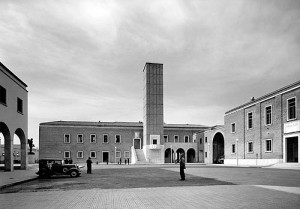The unification of Italy, or lack thereof consistently occupies a central space in the academic dialogue around Fascism. R.J.B Bosworth in “Everyday Mussolinism” through archival sources created a picture of the complexities and contradictions of life under fascism in Italy. One aspect of “Everday Mussolinism,” the prevalence of the client-patron relationship emphasized the difference between the ideology presented by Mussolini’s regime and the reality of life for the Italian public. Moreover, the system undermined the push towards unification and encouraged loyalty to provincial, not national, state power.
The patron client system, based in ancient Rome, created a mechanism that subverted the new Man ideology proposed by Fascism and relied on more traditional terms of favor granting and nepotism. ((R.J.B. Bosworth, “Everyday Mussolinism,” Contemporary European History 14, no. 1 (February 2005): 29)) The raccomandazione system created small, localized bases of power. The establishment and perpetuation of these small bases of power made Italians rely on the whims and favors of their local padrone. Regionalism intensified and in Bosworth’s own words the local patron “might have been rehearsing to play the part of the local Godfather,” utilizing crime and violence to ensure his continued power. ((Bosworth, “Everyday Mussolinism,” 33)) In many ways the raccomandazione system served as the antithesis to the goal Fascist goal of unification and progress in Italy. These small bases of bases further fragmented Italy, ambitious people relied on the favor of their local leader not on the purported merit system of the Fascist regime.
The continued reliance on a traditional system of nepotism instead of the new state run merit system provides just one example of the everyday Italian resistance to Fascism. The reliance on traditional and local customs begs the question: Why did the Italian population resist the ideology of the Fascist state? Furthermore, how does this resistance narrative change when compared to Stalinist Russia and Nazi Germany?

